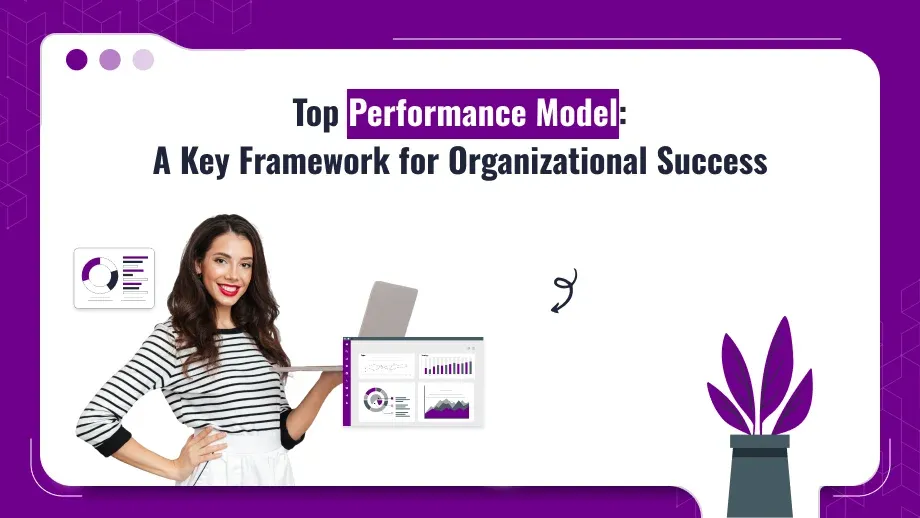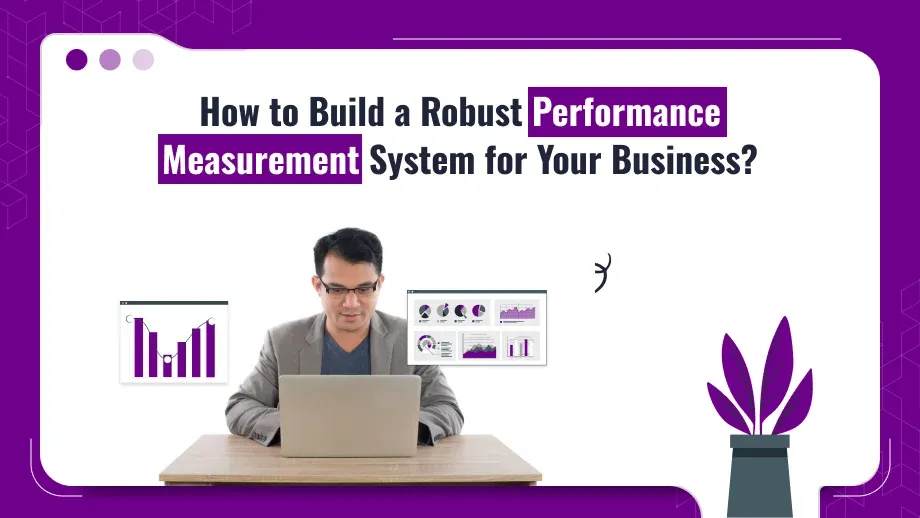
Organizations, walking through today’s dynamic business world, look forward to planning in such a manner that they not only perform well but also produce results. One of the best measures for achieving these objectives is through performance models. Performance models refer to structures that guide an organization about measuring, managing, and enhancing the performance of individuals, teams, and operations at large. By using the right performance model, businesses will align employee contributions with the companies’ strategic goals so that they are both grown and lead to success.
This blog post will touch on the concept of a performance model, look at its key components, and discuss different models of the performance management system, with a hope that it could describe transformation for the approach in performance management by an organisation.
What is a Performance Model?
A performance model is actually an organized system or framework that helps to assess and improve the performance of the employees as well as the teams in a firm. It helps clearly set expectations, report progress, and recognize areas for improvement so that the performance is aligned with organizational goals. Traditionally, performance evaluation is only conducted during annual review, whereas modern performance management system models focus on continuous feedback and development.
The performance models are based on several theories of performance management, which include motivation, development, and goal alignment. Performance models help companies maintain a clear line of sight from top-level strategies to individual goals. If used correctly, these models bring clarity, motivate, and show a culture of continuous improvement.
Important Elements of a Performance Model
For a performance model to be effective, there must be several necessary ingredients put into place that will make sure that it is holistic and in line with the organization’s objectives. The above are the basic required elements of a good robust performance model:
1. Goal Setting
The foundation of any performance management system is the establishment of clear, measurable, and attainable goals. This should be aligned with the general organizational strategy, so that all effort directed by employees targets the source of the organization’s success. The use of SMART goal framework-specific, measurable, achievable, relevant, and time-bound-will be helpful in providing clarity and setting realistic expectations for employees.
Goals are sometimes developed within a performance model in collaboration with managers and employees to encourage ownership and commitment.
2. Continuous Feedback
Now is a long, long way from having to wait for an annual review to gain an understanding of how an employee is performing. Modern performance management emphasizes not only year-round continuous feedback but also helping employees adjust their efforts accordingly and in real time. Openness in communication and more agile adjustments are a result of regular feedback sessions.
Feedback in a performance management system model can be taken in various forms ranging from informal discussions to more structured performance reviews. This is aimed at offering employees pertinent insights into the progress made and what they need to do better.
3. Performance Evaluation
Performance evaluation continues to form an integral element of any performance management model.. Standard appraisals evaluate whether these employees meet the set goals and contribute effectively to the organization. The scope of performance appraisal from this perspective is not only in terms of the outcomes achieved but includes how they grew, what they acquired in terms of skill, and how they addressed the situations that were presented to them when they arose.
Evaluations are generally formal and based on standard measurements and criteria. In this case, it would become a fair measure as the risk of bias is greatly reduced. Such evaluation results serve as means of giving a basis for promotions, compensation, or other developmental opportunities.
4. Development Plans
No performance model is complete without keeping an eye on the employees’ development. Once performance appraisals are conducted and areas for improvement identified, each one should have a customized development plan designed according to his or her needs. Training programs, mentorship opportunities, or new projects may all be included in these plans, designed to help build new skills and grow in their roles.
A development plan helps the employee remain motivated and constantly try to improve in performance, both for the person and for the organization.
5. Employee Engagement
An effective performance management system cannot occur unless the employees are engaged. Engaged employees are those who would participate in their own performance management system through goal setting, feedback, and personal development. The proper and efficient management of an employee’s performance is directly linked to maintaining motivation as well as a commitment to the role being performed. Added to this, it would also be best to consider the fact that engaged employees have more productivity, high job satisfaction, and strong loyalty towards the organization.
There will be the involvement of employees if the intended performance management model is well designed. In this way, the employee’s work will be aligned to the person’s objectives and the objectives of the organization .
Types of Performance Models
Various kinds of performance management system models have been developed to suit various organizational needs and structures. Below are some of the most widely used models:
1. Balanced Scorecard
The Balanced Scorecard is probably the most popular and widely adopted performance management system model. This model gives assessments in four perspectives, namely: financial, customer satisfaction, internal business processes, and learning and growth. The Balanced Scorecard helps organizations assess performance beyond purely financial outcomes. This makes it more balanced as a framework for aligning day-to-day work with long-term strategies.
By focusing on various dimensions, this specific model will, therefore provide balanced performance management. This is by the fact that various health-related aspects of the organization would be absorbed in contrast to the singular financial relevance indicator.
2. 360-Degree Feedback Model
The 360-degree feedback model receives feedback from employees’ peers, subordinates, managers and even customers. The model can give an all-rounded view of what an employee’s performance looks like by compiling many perspectives. This is suitable for development into a leadership and working in harmony.
The greatest advantage of this 360-degree model is that it allows better evaluation, hence reducing possible biases and emphasizing areas where one should grow that may not be pinpointed with traditional top-down evaluations.
3. Management by Objectives MBO
The MBO model applies the concept of defined, measurable goals agreed on between management and employees. It appeals to the concept of alignment: individual objectives must align with organizational strategic goals. Evaluation of performance is done based on how well an employee achieves the given objectives.
MBO will be most effective in organizations where the corporate culture appreciates teamwork and openness. It leads to a feeling of ownership and accountability because the employees clearly know how their efforts contribute to the organization.
4. The SMART Goals Model
An extension of the traditional goal-setting methodologies, the SMART Goals Model is leaned toward being specific, measurable, achievable, relevant, and time-bound. This ensures that employees are well aware of what is expected from them and by whom and how to measure the performance of the organization.
The SMART model goes very well with organizations where clarity and structure are very crucial performance success. It minimizes the ambiguity and creates a clear, focused roadmap for the managers and employees.
Ready to implement a performance model that boosts productivity and engagement?
Explore our tailored solutions to find the perfect performance model for your team!
Performance Management Theories
Many theories of performance management. These theories help organizations design systems that improve employee engagement, increase productivity, and even results at the organizational level. Some of the most significant theories are as follows.
1. Goal-Setting Theory
Performance goal theory is one of the widely accepted theories of performance management. According to the theory, specific and challenging goals, with appropriate feedback, result in high performance levels. Most performance management systems embrace this theory, such as MBO and SMART goals.
2. Expectancy Theory
Expectancy theory, developed by Victor Vroom, suggests that employees work when they expect to receive outcomes or results for their work. This is the core theory in most performance management models that relate performance to rewards and recognition.
3. Equity Theory
Performance management underscores equity theory, which ensures there is fairness in performance. Employees consider the performance of others while ensuring they are compensated appropriately depending on their effort and contribution. Organization that implements this theory in the performance management systems ensures that assessment and awarding of remuneration is ensured by transparency and fairness.
Benefits of Having a Performance Model
Having a performance model benefits both employees and organizations. Among the most influential advantages of having a performance model are the following:
1. Better Employee Performance
A performance model brings about an understanding in an employee of what is expected from them by making clear expectations along with the provision of continuous feedback. The clear expectations along with the feedback tend to keep the employees on track further enhancing their performance, owing to the regular instructions and support that guide them in their work.
2. More Accountability
An effective structured performance management model creates a culture of accountability. Thus, there is an understanding about what people are accountable to and how their performance will be measured. Consequently, the transparency breeds ownership as well as results-related work directions.
3. Employee Growth and Development
A primary purpose of any performance management system is to ensure that employees grow and develop in areas where needed. Offering personalized development plans helps employees build new skills, improves their overall performance, and takes them one step forward in their careers.
4. Improved Employee Engagement
An excellent performance management model evokes employee engagement by involving employees in their individual performance management cycle. The instant the employee feels that his or her efforts are being recognized and valued, then more opportunities they will tend to keep on demonstrating their engagement and strive for success.
5. Data Driven Decision Making
The incorporation of data analytics into modern performance management systems, therefore, will allow an organization to be able to make decisions based on measurable outcomes. Owing to this data-driven approach, managers are now able to spot trends and predict what might happen in terms of future performance, and resources can be used in more efficient ways.
Challenges in Implementing a Performance Model
Despite the great benefits that can arise from using a performance model,, organizations have been confronted with specific issues in trying to effectively implement one:
1. Resistance to Change
During this period of transition from the traditional approach toward performance evaluation to a performance management model, employees or managers are also likely to be resistant to the new model because it is not the system they were accustomed to. The best way to overcome this resistance is through clear communication and proper demonstration of benefits in the new model.
2. Bias in Evaluations
Even after standardization, some degree of bias may be present and influence the outcome of performance evaluation. To reduce that:
organizations need to make criteria as objective as possible and train managers on offering fair and balanced assessments. The use of structured performance management system models like 360-degree feedback can help reduce the biases by looking into a lot of different perspectives.
3. Over-reliance on Metrics
Where data is a must-have component of any performance management system, over-reliance on strictly quantitative metrics will be seen to be incomplete without qualitative insights. Such qualitative insights would include employee engagement and development of skills. Holistic performance model that balance tangible results with personal growth will be sought for by managers.
How to Choose the Right Performance Model
The selection of the right performance model depends, among other things, on the size and type of the organization, industry, and particular business objectives. There are the following important factors while choosing a performance management model.
1. Organizational Goals
Choose that performance model which aligns with your organizational long-term strategy. For example, if the need of your organization is to innovate and be creative, then a model will be preferred that focuses on learning and development, like the Balanced Scorecard.
2. Organizational Size
To large organizations, models like the Balanced Scorecard or 360-degree feedback would be much more appropriate for their performance management system models. For a small-sized organization, on the other hand, would need to have fewer models such as SMART Goals or Management by Objectives (MBO), which are obviously easier to implement as well as to manage.
3. Flexibility in application to various jobs
The various roles within an organization may have different needs. For instance, a sales team is measured by revenue targets, and another may be client satisfaction and resolving issues in the provision of customer service. A flexible performance management system thus has to accommodate varying needs yet maintain a single approach to performance management throughout the organization.
Conclusion
The performance model may change the measurement of employee performance by organizations. It is either goal-setting frameworks such as SMART, multi-source feedback like the 360-degree model, or a more strategic approach such as the Balanced Scorecard. Using the best performance management system model to work with will keep your team aligned, engaged, and focused on achieving organizational success.
Understanding the theories of performance management along with how to apply the appropriate performance models will help your company create the right environment that fosters continuous development and maximizes both individual and collective performance. Implanting the correct performance management system creates a culture of accountability, growth, and engagement for the company in the right direction toward achieving strategic goals.





